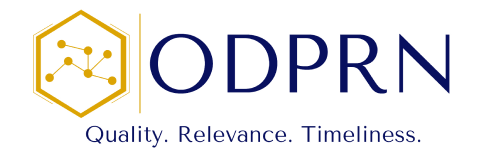The ODPRN has completed a drug class review on allergen immunotherapy. The final reports, summary of the research findings and reimbursement option recommendations are available below.
Final Reports and Reimbursement Options
- Consolidated Final Report and Reimbursement Option Recommendations
- Allergen Immunotherapy Qualitative Report
- Allergen Immunotherapy Environmental Scan Report
- Allergen Immunotherapy Pharmacoepidemiology Report
- Allergen Immunotherapy Systematic Review Report
- Allergen Immunotherapy Pharmacoeconomics Report
- Allergen Immunotherapy Budget Impact
- Allergen Immunotherapy Citizen’s Panel Report
Click to view the complete infographic
Summary of Drug Class Review Findings: Allergen Immunotherapy
Download a PDF of this Research Summary
The Ontario Drug Policy Research Network (ODPRN) conducted a drug class review on the effectiveness, safety, and accessibility of allergen immunotherapy using multiple research methods. Immunotherapy can be given to patients as an injection (subcutaneous immunotherapy or ‘SCIT’) or as tablets under the tongue (sublingual immunotherapy or ‘SLIT’). SCIT products are used for patients with allergies to aeroallergens (e.g., pollen, dust mites, mold) or venom (e.g., bee or wasp stings) whereas SLIT products are just for pollen aeroallergens. For patients with allergic rhinitis or asthma, SCIT and SLIT should only used when pharmacotherapy has failed, or is not tolerated by patient.
What did we find?
Efficacy and Safety
Both types of treatment are effective in helping patients with allergic rhinitis and allergic asthma. In patients with allergic asthma, SCIT and SLIT are effective in reducing asthma symptom scores and/or symptom and medication scores (i.e., use of antiallergic medications). In patients with allergic rhinitis, SCIT and SLIT are effective at reducing allergic rhinitis symptom scores, total combined medication-symptom scores and improving disease-specific quality of life. Anaphylaxis (severe allergic reaction) is possible with both types of treatment. Patients receiving SCIT for venom allergies can also develop severe local reactions. There are also potential issues regarding the unstandardized compounding of some SCIT therapies, resulting in possible safety concerns.
Accessibility and Use
In Ontario, two SLIT products are available (Oralair in March 2014 and Ragwitek in May 2015) on the Ontario Drug Benefit (ODB) formulary as Limited Use products. SCIT is available through the “Allergy Product” program for eligible ODB patients, which is similar to general benefit listing. In 2013/14, there were 8,116 publically-funded SCIT allergen immunotherapy users in Ontario (since the SLIT products were not yet funded, no SLIT users were included).
Cost
Since there is a lack of standardization of how SCIT allergen immunotherapy is dispensed (i.e. on-site in the physician’s office, manufacturer, or pharmacy), the pricing varies. Another important factor in cost, is the type of allergen used (e.g., environmental or venom) for the therapy. Therefore, the potential budget impact of a policy addressing cost fluctuates depending on the price reimbursed to the physician. If costs are restricted to the minimum amount currently reimbursed by the Ontario Public Drug Programs (OPDP) ($106.50/claim), this could lead to savings of over $1.5M/year (or 44% decrease in overall costs associated with SCIT). However, reimbursing all claims at the mean amount currently reimbursed ($224-380/claim), would lead to excess costs of over $860,000 annually.
Recommendations for consideration
- Limit duration of therapy to 5 years for aeroallergens for SCIT, 3 years for SLIT, and lifelong treatment (as needed) for venom therapy.
- Require suppliers to include drug identification numbers (DIN) on all prescriptions for subcutaneous allergen immunotherapy (SCIT).
- Develop clinical criteria for use of SCIT.
- Coverage of sublingual immunotherapy be limited to commercially available SLIT products.
- Develop pricing structure for patient-specific allergen immunotherapy.
- Provide guidance for safe manufacturing practices.
Final Comprehensive Research Plan (CRP)
- Allergen Comprehensive Research Plan Overview
- Allergen Pharmacoepidemiology CRP
- Allergen Pharmacoeconomics CRP
- Allergen Environmental Scan CRP
- Allergen Systematic Review CRP
- Allergen Qualitative CRP
Stakeholder Feedback
- Comments from stakeholders on draft Reimbursement Option Recommendations
- Comments from stakeholders on draft Comprehensive Research Plans
Any questions? Contact us at info@odprn.ca.
